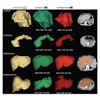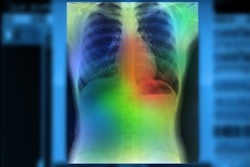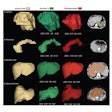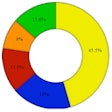An automated protocoling algorithm used with a hospital's electronic health record (EHR) software reduces radiologist CT exam workload, a research team from Massachusetts General Hospital in Boston has reported.
The findings could make busy radiology departments more efficient, wrote a team led by Ryan Chung, MD. The group's work was published January 17 in the American Journal of Roentgenology.
"The system represents a solution for reducing radiologists' time spent performing noninterpretive tasks while improving care efficiency," it noted.
Imaging exam protocoling is a task that increases radiologists' workload and can cause workflow inefficiency, Chung and colleagues explained. They investigated the effect of using an automated CT protocoling algorithm with the hospital's electronic medical record on exam process times and protocol error rates via a study that included 317,597 CT exams taken between June 2020 and June 2022; the algorithm assessed all CT orders and either assigned a protocol or directed the order for manual radiologist protocoling. Study timeframes included a pilot stage (July to December 2020), an implementation stage (January to December 2021), and a post-implementation stage (January to December 2022). The researchers evaluated protocol error rates by numbers of quality improvement reports and exams recalls.
The group found that the frequency of automatic protocoling varied depending on the study timeframe, at 27.4% during the pilot phase, 42.2% during the implementation phase, and 64.5% during the post-implementation phase, and reported that automatic protocoling reduced mean times from order entry to protocol assignment compared to manual protocoling.
| Comparison of manual and automatic exam protocoling for CT imaging by place of service | ||
|---|---|---|
| Mean times from order entry to protocol assignment (in hours) | Manually protocoled exams | Automatically protocoled exams |
| Emergency department exams | 2.1 | 0.2 |
| Inpatient exams | 3.5 | 0.5 |
| Outpatient exams | 1,289 (about 53 days) | 361.7 (about 15 days) |
Use of the automatic protocol system also resulted in an overall reduction in quality improvement reports and recalls, the team reported.
| Comparison of manual and automatic exam protocoling by study phase | ||
|---|---|---|
| Reports/recalls | Manually protocoled exams | Automatically protocoled exams |
| Quality improvement reports | ||
| Pilot | 9 | 3 |
| Implementation | 19 | 19 |
| Postimplementation | 5 | 25 |
| Recalls | ||
| Pilot | 1 | 0 |
| Implementation | 7 | 1 |
| Postimplementation | 0 | 3 |
"The automated protocoling system substantially reduced radiologists' protocoling workload while decreasing times from order entry to protocol and examination completion … [and] protocol errors and recalls were infrequent," the group concluded.
The complete study can be found here.



















